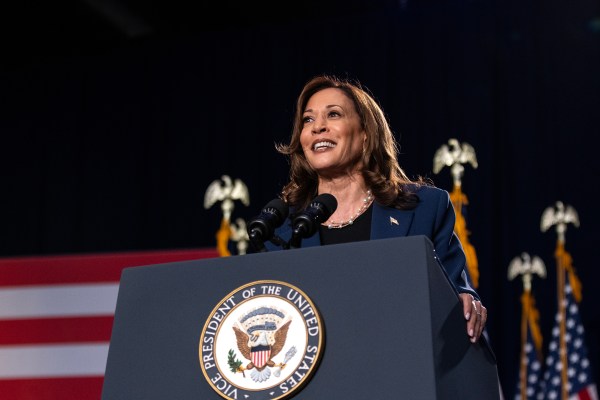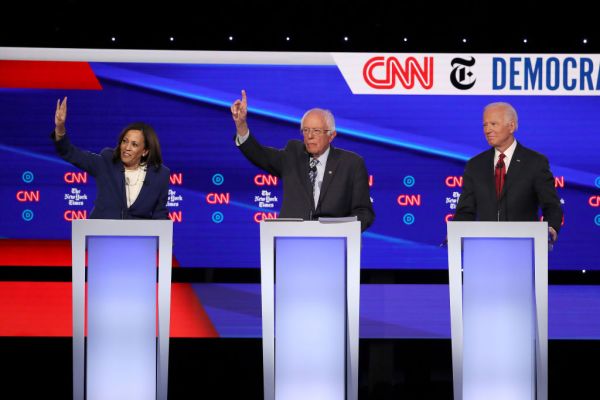Having pledged to “restore the soul of America” in his victory speech, Joe Biden and his congressional allies are moving rapidly to enact his domestic agenda. After ramming through a $1.9 trillion stimulus bill, they have moved on to bills to nationalize voting rules, spend $2 trillion on a variety of projects including infrastructure, and further other progressive priorities. Although the Senate parliamentarian permitted the stimulus to pass under reconciliation rules and is allowing the Senate Democrats additional rounds of reconciliation, many of these new measures are ineligible for this method. Egged on by some party members, Senate Democrats are considering actions to weaken or remove the filibuster entirely. But Democratic Sens. Joe Manchin and Kyrsten Sinema have each announced their opposition to these moves.
This is not the first time that an American political party has campaigned as a curb on their opponents’ tyrannical impulses and immediately tried to remove safeguards against majoritarian rule to enact their economic agenda. The early Whig party did as well, and it bears a strong resemblance in other ways to today’s Democratic Party. Despite their posture as the party of reasonable, disinterested statesmen, the Whigs made catastrophically shortsighted decisions in their haste to pass bills once they gained control of the federal government. Much may depend on whether the Democrats learn from the Whigs’ example.
Like the modern Democrats. the Whigs cobbled together their party out of a motley assortment of constituencies, many of whom had little in common. The party leadership mostly came from the remains of the National Republicans, who in 1832 ran a negative campaign against Andrew Jackson but failed to court disillusioned third-party voters, a strategy that failed as abjectly for them as it did for Hillary Clinton in 2016. Humbled by defeat, the National Republicans rebranded as the Whigs—the English political party that stood opposed to monarchical excess—and reached out to voters horrified by Jackson’s abuses to assemble a coalition of New Englanders, Evangelicals converted during the Second Great Awakening, and the planter class in the South. Although there were strong intraparty disagreements over slavery and other issues, the Whigs combined the Evangelical’s fervor for moral causes, the New England Puritan’s penchant for regulating others’ behavior, and the Southern planter class’ distaste for popular politics and affection for the administrative state.
Although both the Democrats and Whigs were split on slavery, the issue that would soon tear the country apart, the two parties quickly developed intense mutual hatred. The Whigs were the party of economic development, social reform, and respectability. Their signature economic priority was “internal improvements,” or infrastructure, which they proposed to fund by raising tariff rates and increasing the sales price for federal lands. They complemented this ambitious program with a social platform that included laws enforcing Sabbath observance, raising taxes for public schools, and opposing alcohol consumption, which they associated with the lower classes who needed to be taught the values necessary for the modern world.
Much as the more combative Republicans do today, the Democrats rallied voters who wanted a respite from the holier-than-thou snobs who kept ordering them around. They received additional support from people who lived farther from transportation routes and did not want to pay higher taxes for infrastructure programs that would not benefit them and also from the upwardly mobile settlers who wanted to buy cheap federal land in the West and improve their lot in life.
These class-based and social dynamics created an atmosphere of intense negative partisanship. In his magisterial The Rise and Fall of the American Whig Party, historian Michael F. Holt remarks, “party adherents would vote as much out of loyalty to their own organization or a negative reaction against the other as because of immediate issues.” As many political analysts have noted about today’s politics, he observes “nineteenth-century partisan combat resembled the competitive mechanism between fans of opposing twentieth-century college football teams.” Partisan newspapers did their utmost to rally their voters by magnifying the differences between the parties.
After several failures at the presidential level, in 1840 the Whigs and nominee William Henry Harrison rode a wave of popular discontent into the White House, sweeping the Senate and House of Representatives along the way. The Whigs were eager to deliver on their promises to voters and reverse an economic depression that had devastated the country and discredited the incumbent Democratic Party. The “resistance” of their time had gained power and was ready to use it.
To party leaders like Henry Clay, it was clear that obstructionist rules and regulations had to be pushed aside: The urgent need to prevent another tyrannical Democratic administration forced their hand, and there was no time to waste. At that time, House rules allowed unlimited debate, and a few years before John Quincy Adams had successfully filibustered the annexation of Texas, preventing the slave owners from adding another state and upsetting the balance in the Senate between slave and free states. One month after Clay rolled out the Whig legislative agenda, the pro-slavery Georgia Whig Lott Warren proposed a rule change limiting each speaker to one hour. Over the objections of Adams and other defenders of minority rights, the rule passed, and later in the session some Whigs attempted to censure Adams and other anti-slavery representatives for slowing down the House’s business. Clay tried to limit the filibuster in the Senate, too, but he was rebuffed.
Although nuking the filibuster made the House run more smoothly, the Whigs failed to enact most of their agenda because of divisions within the party. Harrison died shortly after his inauguration, and Vice President John Tyler was less supportive of Clay’s ambitious program. The congressional Whigs ignored his objections and voted through their preferred bills anyway. When the president vetoed the Whig bills, Clay tried to increase pressure on Tyler by ramming through new legislation, which also went nowhere. Since the Whig leaders refused to reconcile their differences, very little of their agenda made it into policy, and the party was massacred in the midterm elections: Their supporters outside of Washington were disillusioned by the party’s petty bickering and repeated failures.
The Whigs did not benefit much from shredding the House filibuster, but slavery did. As his term drew to a close, Tyler negotiated a new annexation treaty with Texas, which the Senate rejected. Tyler and his congressional allies then introduced a joint resolution for annexation, which sailed through the House and barely passed in the Senate. Adams, who had lost his best weapon to stop slavery’s expansion, could only watch helplessly while “the Union is sinking into a military monarchy,” as he put it. The Whigs, who had run as the guardians of the republic and its last defense against tyranny, were not living up to their self-image.
Texas’ annexation started the slide toward the Civil War. As many annexation opponents had predicted, acquiring Texas set the United States on a path to war with Mexico. The resulting U.S. territorial gains reopened the national controversy over slavery’s expansion, which had been kept to manageable proportions after the 1820 Missouri Compromise. That controversy boiled over into low-intensity warfare in Kansas and other parts of the country before escalating into secession and the Civil War. Whatever the merits of Whig bills like the Tariff of 1842, they were vastly outweighed by the country’s near disintegration.
Today’s culture wars have yet to generate an issue as likely to tear the country apart as slavery, but a successful Democratic attempt to force more partisan bills through with a slim majority is unlikely to reduce social divisions. For example, the Democrats’ top priority is now the spending bill that is being marketed as an infrastructure measure. Although individual parts of the bill are popular, the entire package attracts support from only about 70 percent of Democratic voters and is far less popular among independents and Republicans, according to a recent poll. Perhaps the American people will change their minds, the bill will become more popular once it makes its way through the drafting process, and once enacted it will unite the country. But that seems unlikely.
Moreover, there is no guarantee that the Democrats can forge a consensus within the party on other parts of their agenda, either for the rest of the Biden economic program or for symbolic social issues like gun laws. Instead of running against Republican obstructionism in the midterm, the Democrats could find themselves in the same position as the Whigs did: generating headlines that energize their opponents, but failing to reward their supporters because of internal bickering.
What is far more certain is that a Senate without the filibuster will become more heated and more hotly contested. The Senate Republicans are publicly salivating about the bills that they could pass once retaking the majority, such as a border wall, reduced Medicaid funding, nationwide relaxation of firearm laws, and pro-life bills. Imagine each contestable Senate race having the searing intensity of the Brett Kavanaugh hearings.
Today’s divisions between the Republicans and Democrats are just as vicious as they were between Whigs and Democrats before, and to many the stakes for our country appear to be as high as they were back in the 1840s. Even so, Senate Democrats should be careful about how they proceed: Destroying checks and balances is no guarantee of legislative or electoral victory, and it will make partisanship worse.
Lott Warren is a footnote on the path to ruin. Is that how moderate Democrats like Joe Manchin and Kyrsten Sinema want to be remembered?
Mike Watson is the associate director of Hudson Institute’s Center for the Future of Liberal Society.








Please note that we at The Dispatch hold ourselves, our work, and our commenters to a higher standard than other places on the internet. We welcome comments that foster genuine debate or discussion—including comments critical of us or our work—but responses that include ad hominem attacks on fellow Dispatch members or are intended to stoke fear and anger may be moderated.